



133 Molesworth Street
PO Box 5013
Wellington 6140
New Zealand
T+64 4 496 2000
14 June 2022
Maxwell
By email: [FYI request #18813 email]
Ref:
H202203663
Tēnā koe Maxwell
Response to your request for official information
Thank you for your request under the Official Information Act 1982 (the Act) to the Ministry of
Health (the Ministry) on 8 March 2022. You asked:
“You do not need to have proof of vaccination if you: are a New Zealand citizen. However,
New Zealanders who do not have proof of vaccination must enter managed isolation and
quarantine (MIQ). Given the changing nature of Covid-19 and the community spread of
Omicron amongst citizens of every vaccine status*.
Can I please request all relevant scientific evidence/rationale correspondence which
contributed to enabling this specific requirement?”
The public health risk assessment on 23 February 2022, was part of the internal advice within
the Ministry about next steps in the public health response to the Omicron outbreak. A second
memo on 27 February, provided further internal advice to the Director -General of Health about
the next planned steps by Government in reconnecting New Zealand.
In particular, this assessment and memo relate to continued use of the border restrictions
including the use of Managed Isolation and Quarantine (MIQ) facilities for travellers across the
border.
The risk assessment questions whether there remains a sufficiently strong public health
justification for MIQ or the full seven days of self-isolation for eligible arrivals given the wide
spread of Omicron within New Zealand. The risk assessment says that despite new
international arrivals presenting a relatively lower public health risk, any transition would need to
be carefully managed to reduce potential negative impacts on communities and the public
health system.
The memo makes clear that the border measures, including MIQ, were proportionate when New
Zealand was pursuing the elimination strategy initially, and then preventing a widespread Delta
outbreak.
Further on 18 March 2022, requirements to enter New Zealand on the self-test on arrival
pathway were adjusted. This meant that all New Zealand citizens (whether they were
vaccinated against COVID-19 or not), and non-New Zealand citizens who met the
specified COVID-19 vaccination requirements are now able to skip Managed Isolation and
quarantine (MIQ) and instead, upon arrival take a rapid antigen test (RAT) on day 0/1 and day
5/6 and report the results of the tests to the Ministry.

For more information about border changes for entry to New Zealand, please visit the Unite
Against COVID-19 Website
: https://covid19.govt.nz/international-travel/travel-to-new-
zealand/when-new-zealand-borders-open/.
The Ministry has identified two documents within scope of your request. These are itemised in
Appendix 1 of this letter and copies of the documents are enclosed and have been released to
you in full.
I trust this information fulfils your request. Under section 28(3) of the Act, you have the right to
ask the Ombudsman to review any decisions made under this request. The Ombudsman may
be contacted by email at:
[email address] or by calling 0800 802 602.
Please note that this response, with your personal details removed, may be published on the
Ministry website at:
www.health.govt.nz/about-ministry/information-releases
Nāku noa, nā
Sarah Turner
Deputy Director-General
Office of the Director-General
Appendix 1: List of documents for release
#
Date
Document details
Decision on release
1
23 February 2022
Memo: Proportionality of MIQ
Released in full.
and self-isolation requirements
for international arrivals to NZ
2
27 February 2022
Memo: Reconnecting New
Zealand Further advice on
removing self-isolation
requirement for international
arrivals
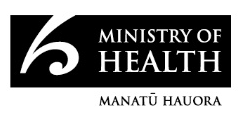
Document 1
Memo
Proportionality of MIQ and self-isolation measures for international arrivals
to New Zealand in the context of our response to widespread community
transmission
Date:
23 February 2022
1982
To:
Dr Ashley Bloomfield, Te Tumu Whakarae mō te Hauora, Director-General of Health
Act
From:
Caroline Flora, Acting Deputy-Director General, System Strategy and Policy
For your:
Decision
Purpose of report
1.
This memo:
a. Notes the outcome of a recent Public Health Risk Assessment (PHRA) that f
INFORMATION ound the risk
posed by international arrivals transmitting COVID-19 is no longer higher than the
domestic risk posed by our current Omicron outbreak and its likely trajectory.
b. Highlights the need to review our current public health border measures alongside the
domestic Omicron response to ensure those measures remain fit for purpose,
OFFICIAL
proportionate, and justifiable.
Current situation
THE
2.
In recent weeks there has been significant growth of COVID-19 cases in the New Zealand
community due to the highly transmissible Omicron variant. Case numbers are now doubling
every three days. Based on model ing projections, cases are likely to continue to escalate and
UNDER
peak within the next four to six weeks.
COVID-19 cases detected at the border are now a small proportion of overall cases in New Zealand
3.
The graph in figure 1 il ustrates the recent sharp in increase in community cases with the
current Omicron outbreak compared with cases detected at the border from international
arrivals.
RELEASED
4.
Border cases detected in recent international arrivals peaked first in March 2020, then
reduced quickly when border controls were put in place. A steady stream of active and
historical cases were detected and contained in MIQ until August 2021, when a border
incursion triggered a community outbreak. Border cases next increased after December 2021
as the Omicron variant reached New Zealand, triggering our current community outbreak in
mid-January 2022.
5.
Cases detected at the border in international arrivals are now a smal proportion of overal
cases in New Zealand.
1


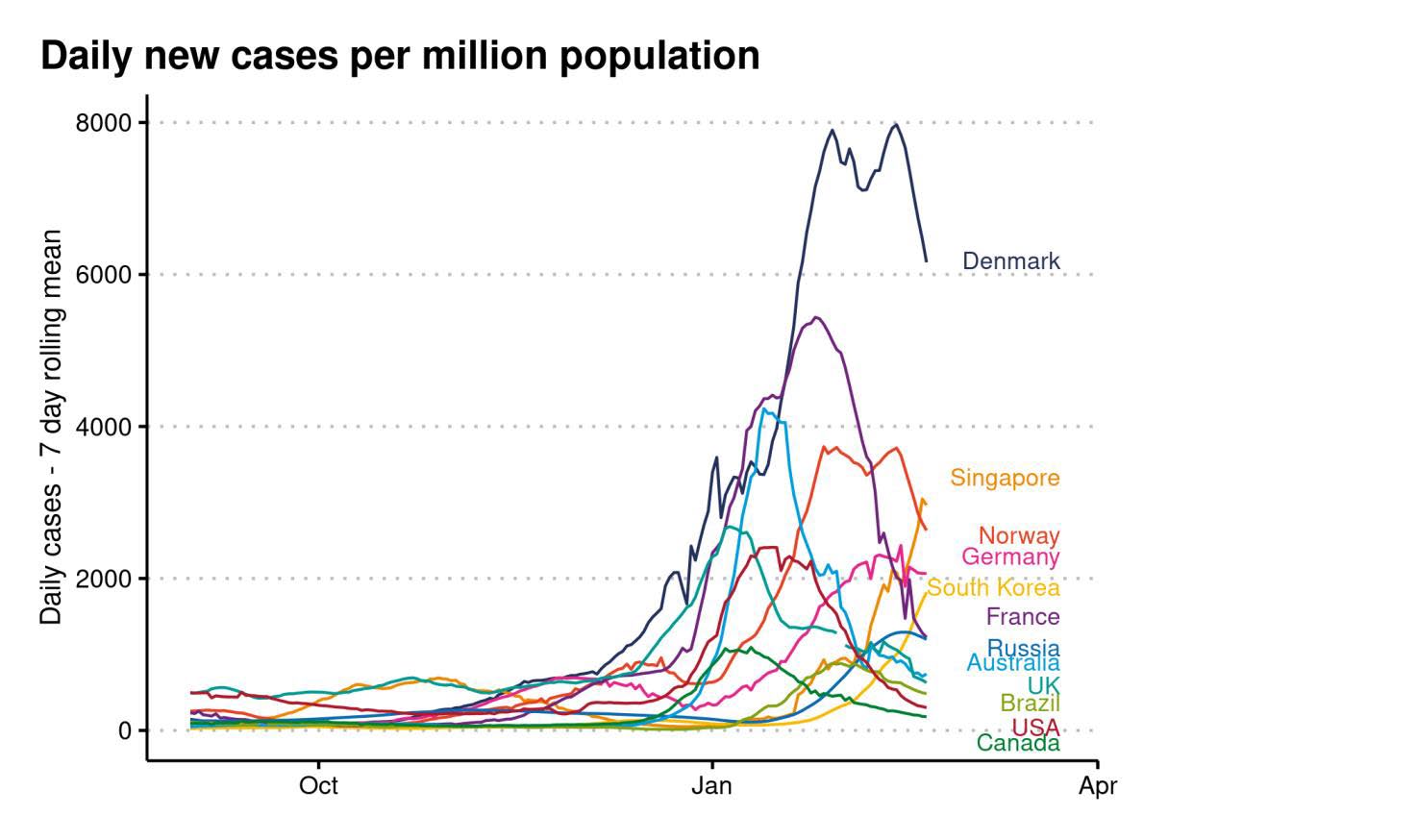
Document 1
6.
Border cases have been decreasing since 27 January 2022, both in number and as a
proportion of arriving travellers. In the fortnight to 22 February 2022, 65 acute cases were
reported in international arrivals, down from 461 acute cases two weeks earlier.
Figure 1: COVID-19 reported cases since March 2020 in New Zealand
1982
Act
INFORMATION
Source: Ministry of Health Data Warehouse. Includes historical and active cases
7.
Appendix 1 sets out the imported cases of COVID-19 in both absolute numbers and as a rate
OFFICIAL
per 1,000 international arrivals from point of departure in the fortnight to 21 February 2022.
Figure 2: Daily COVID-19 cases per million population to September 2021 to February 2022
THE
UNDER
RELEASED
Source: International Surveil ance Report: 21 February 2022. Ministry of Health
2
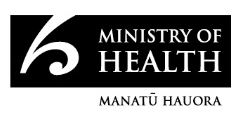
Document 1
8.
This downward trend is reflected in the global situation (il ustrated in figure 2). International
surveil ance reports show that after a significant surge in COVID-19 cases from many
countries in January 2022 due the spread of the Omicron variant, case incidence in many
countries is now declining.
Estimates of cases arriving during March 2022 with the commencement of RNZ
9.
Advice to Cabinet on 1 February 2022 on commencing a phased reopening of the
international [CAB-MIN-008] suggested that Step 1 of RNZ is likely to bring between 5,000
and 6,000 travellers per week from Australia
10. In the two weeks to 21 February, 4 active cases were detected per 1,000 arrivals whose
country of origin was Australia. For comparison, before Omicron, there were around 3 per
1982
1,000. In late January 2022, there were 15 active cases per 1,000 arrivals. In addition, there
may have been other cases in flights and passengers transiting Australia.
Act
11. Using the ranges of 5,000 to 6,000 travel ers per week, and 0.5% to 1.5% cases per arrival, we
estimate that Stage 1 of Reconnecting New Zealand (RNZ) could bring between 20 and 90
active cases per week from Australia entering on the self-isolation pathway.
12. For Step 2 New Zealand citizens and other eligible people from al other countries may enter
on the self-isolation pathway. Travel numbers are expected to increase by another 10,000 to
13,000 per week. In recent weeks, 1.9% of arrivals from countries beyond Australia have been
active cases; rates were much higher in mid-January.
INFORMATION
13. Assuming 1.0% to 5.0% are active cases at time of arrival, Step 2 could see another 100 to
600 cases entering on the self-isolation pathway per week.
Effect of future cases on community outbreak
14. Te Pūnaha Matatini have modelled the effect on the cur
OFFICIAL rent outbreak of cases entering across
the air border. They assume that 25% of active cases can be detected by testing on arrival.
The other 75% of active cases would slip through the safe-guards of testing and self-isolation
THE
into the community and seed new outbreaks.
15. The model estimates that 90 active cases arriving each week under Step 1 would increase
community cases and hospitalisations by about 0.3% overal , compared to the current
expected trajectory of the outbre
UNDER ak.
16. The worst scenario for Step 2 is another 600 active cases week entering the self-isolation
pathway each week. The Te Pūnaha Matatini model estimates that would increase community
cases and hospitalisations by less than another 1% over the course of the current outbreak –
which is much less than the difference between the “high” and “medium” scenarios in the
current Te Pūnaha Matatini model.
RELEASED
17. This prediction may be optimistic, because international arrivals may go to any part of New
Zealand, and seed new outbreaks in areas that do not yet have significant numbers of cases.
The model also assumes that the variants of the imported cases present are similar in
transmissibility and health outcomes to the current Omicron variant.
3
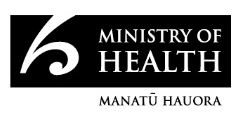
Document 1
Public health advice and recommendations
A recent Public Health Risk Assessment considered the proportionality of measures at the border 18. A PHRA was held on 21 February 2022 to consider whether to shift from Phase Two to Three
of the Omicron response. The assessment involved a comprehensive analysis and discussion
of the outbreak and an assessment against pre-agreed critical indicators: rate of growth in
domestic case numbers; contact tracing and case management capacity; and testing demand
and capacity. On the basis of that assessment, you recommended moving to Phase Three of
the Omicron response plan on 11.59pm Wednesday 23 February [HR20220289 refers].
19. As part of the PHRA, the proportionality of the border settings alongside the settings for the
domestic management of COVID-19 was considered. Advice to the Minister noted that the
1982
shift to Phase Three measures wil have implications on the legitimacy of our current border
settings and self-isolation settings proposed under Reconnecting New Zealanders.
Act
20. With the relative risk at the border diminishing as the rate of domestic transmission increases
it is unlikely that all MIQ or self-isolation settings will remain required from a public health
risk management perspective. The briefing included a recommendation for the Minister to
note that work is underway to advise him on the proportionality of certain border settings,
particularly the requirements for self-isolation, if the government agrees to move to Phase
Three in its domestic public health settings.
INFORMATION
21. Given the relative risk of becoming infected with COVID-19 in the community now exceeds
the risk at the border the PHRA agreed that further consideration of border measures is now
warranted to ensure these measures are fit for purpose, proportionate and justifiable.
22. The core policy objective of MIQ, self-isolation, and testing requirements for international
arrivals is to prevent and limit risk of an outbreak or limit the spread of COVID-19 in the New
OFFICIAL
Zealand community.
23. These measures were proportionate when we were pursuing an elimination strategy, and the
THE
aim was to take al reasonable steps to reduce the possibility of a case at the border seeding
a community outbreak.
24. With the current situation of an escalating COVID-19 outbreak in the community, there is
now a greater level of infection r
UNDER isk within the community compared to the risk of arrivals
importing COVID-19 from overseas. As such, it is harder to justify tighter restrictions on
international arrivals than those applied to those in the community from a public health risk
management perspective.
25. It is questionable whether there remains a strong public health justification for either MIQ or
the full seven days self-isolation for eligible arrivals. Reassessing each of these measures in
RELEASED
detail should now be undertaken as a priority and any changes should be implemented as
soon as is feasible.
26. Despite the assessment that international arrivals now present a relatively lower risk, we are
mindful that any transition would need to be managed carefully to reduce potential negative
impacts on communities and the health system.
27. Based on the model ing by Te Pūnaha Matatini, the proportion of community cases seeded
by international arrivals is likely to be relatively smal in the context of the current outbreak.
The expected impact on hospitalisations is projected to be less than 2% which is likely to be
manageable as part of the current Omicron response.
4
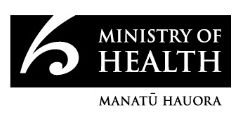
Document 1
28. It should be noted that this model ing is based on the upcoming self-isolation setting, and it
is likely that should border settings loosen there would be more travellers across the border
which may result in a higher number of cases.
29. Furthermore, al arrivals entering under the self-isolation pathway, who are aged 17 years and
above, wil be fully vaccinated, which wil provide protection against severe disease and
hospitalisation. The high levels of vaccination in the domestic population also provides
additional protection.
30. There is likely a reasonable public health rationale to maintain a testing requirement for
international arrivals in order to assess for any new variants. Follow-up PCR tests on positive
RATs would enable whole genomic sequencing to take place, as long as this can be
1982
supported by domestic testing capacity.
31. There is very good international surveil ance of circulating COVID-19 variants. It is highly
Act
likely that we would be alerted to any new variant of concern wel before it is detected in a
travel er to New Zealand. Currently Omicron is the dominant variant global y with al other
variants continuing to decline across al six World Health Organization regions.
Policy considerations
Orders made under the COVID-19 Public Health Response Act 2020 must be kept under review
32. We have an ongoing obligation to review all rights limiting measures that are a
INFORMATION pplied
through the COVID-19 Public Health Response Act 2020 (the Act). These need to be
continually assessed as the threat presented by the pandemic evolves and our response
adjusts.
33. Limitations on rights set out under the New Zealand Bil of Rights Act 1990 (NZBORA) wil
OFFICIAL
only be lawful if they are rational y connected to the policy objective they were intended to
meet and are proportionate to the importance of that achieving that objective. NZBORA
requires that the least restrictive measur
THE e is used to achieve a policy objective.
Previous advice was that international arrivals present similar risk as close contacts
34. We had recently advised that international arrivals present a similar COVID-19 risk profile to
close contacts in the community
UNDER , and therefore, as a general principle, arrivals should be
required to meet broadly similar testing and isolation requirements as close contacts of
domestic cases. Based on this advice, Cabinet agreed that the self-isolation pathway settings
should broadly align with settings for managing close contacts in the community [CAB—22-
MIN-008 refers].
35. Border measures for international arrivals are set out in appendix two. On 16 February the
RELEASED
period of MIQ was reduced from ten to seven days, to match the self-isolation requirements
under Phase Two of the Omicron response. Arrivals eligible for the self-isolation pathway
must have a negative pre-departure test, be ful y vaccinated against COVID-19, remain in
self-isolation for seven days, take a RAT on days 0/1 and 5/6, report the results, and if tested
positive get a PCR test from a community testing centre.
36. Once the Omicron response moves to Phase Three, the requirements on close contacts of
cases in the community loosen. Close contacts of cases are no longer required to self-isolate
or be tested. Only those who are acute cases and their household contacts must self-isolate
5

Document 1
and testing is advised only for those who are symptomatic, using a RAT (or a PCR if clinically
advised).
Adjusting the requirements at pace will be challenging
37. Given that new variants of concern are likely to continue to emerge, border settings need to
be flexible enough to adapt to a changing situation, if required.
38. Some measures, however, are easier to adjust than others. Adjusting testing requirements for
arrivals would be relatively simple. Removing the requirement for MIQ completely, at short
notice, would have significant operational implications. If the epidemiological context was to
shift and MIQ was once again needed it would be logistical y chal enging to reinstate MIQ at
pace.
1982
39. Moving to ease the border restrictions with the commencement of RNZ has required
significant effort across agencies. With Step 1 commencing in less than a week, there
Act is a risk
that adjustments to the settings that are done at pace will disrupt the commencement of the
initial RNZ steps.
Next steps
40. I am recommending, therefore, that further work is undertaken to more closely identify which
aspects of MIQ and self-isolation measures for international arrivals could be modified to
match the public health risk and by when. This wil contribute to advice that is b
INFORMATION eing
prepared by the Department of Prime Minister and Cabinet (DPMC).
41. Initial advice from DPMC to the Minister is due by 25 February 2022 and will include input
from other agencies including border agencies, the Ministry of Business Innovation and
Enterprise (MIQ) and Crown Law Office. DPMC have proposed that a more detailed briefing
OFFICIAL
wil be prepared for Ministers the following week.
THE
Recommendations
It is recommended that you:
UNDER
1.
Note as part of the recent Public Health Risk Assessment that recommended
Noted
moving to Phase Three of the Omicron response plan, officials considered
whether this shift has any implications for border settings.
2.
Note that the relative COVID-19 transmission risk posed by international
Noted
arrivals is no longer higher than the domestic risk of COVID-19.
RELEASED
3
Note that the MIQ or self-isolation requirements for international arrivals may
Noted
no longer being proportionate and justifiable in the context of the current
outbreak and our Omicron management response.
4
Agree to officials undertaking further work to identify in more detail what
Yes
changes need to be made to the MIQ and self-isolation settings to ensure
these are proportionate to the risk.
6
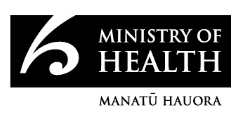

Document 1
5.
Agree share this memo with the Department of Prime Minister and Cabinet to
Yes
inform their initial advice to Ministers on 25 February 2022.
Ashley’s comment:
Agreed but this should be expedited. The starting point should be that requirements on
incoming travellers should be similar to those of people in the community; retaining
the distribution of RATs to support people arriving to test is probably worthwhile (as a
point of difference).
1982
Act
Dr Ashley Bloomfield
Te Tumu Whakarae mō to Hauora
INFORMATION
Director-General of Health
Date: 24 February 2022
OFFICIAL
THE
UNDER
RELEASED
7

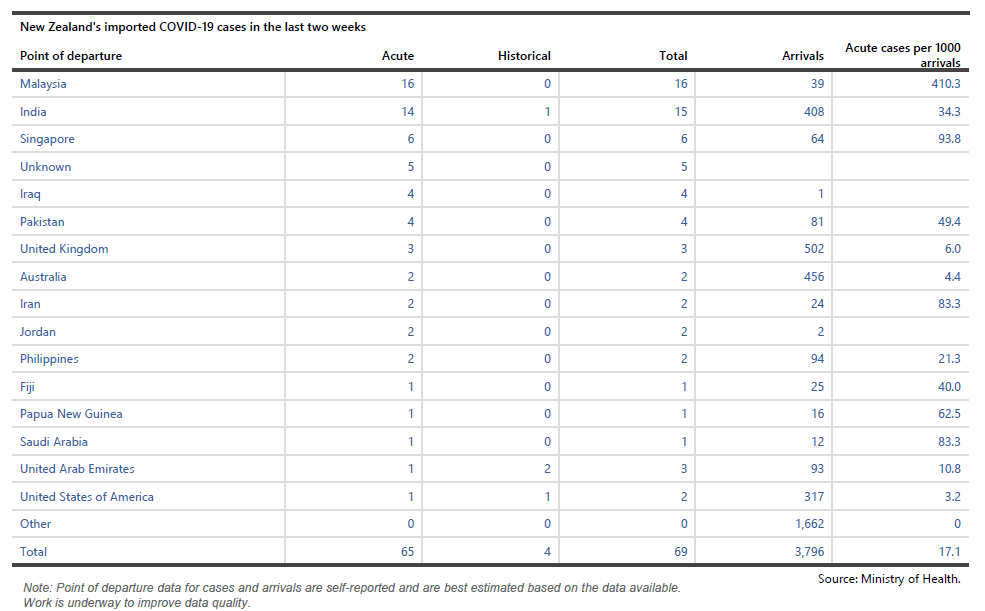
Document 1
Appendix 1: COVID-19 cases detected at the border to 21 February 2022
1982
Act
INFORMATION
OFFICIAL
THE
UNDER
RELEASED
8
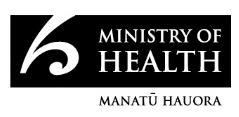
Document 1
Appendix 2: Pre-departure testing, vaccination, isolation testing requirements for the entry
pathways
No isolation pathway
Self-isolation pathway
MIQ pathway
Pre-departure
testing
No requirement
•
PCR test within 48 hours of
•
PCR test within 48 hours
departure OR
of departure OR
•
supervised RAT within 24
•
supervised RAT within 24
hours of departure OR
hours of departure OR
•
supervised LAMP within 24
•
supervised LAMP within
hours of departure.
24 hours of departure.
Vaccinations
•
Complete course of any
•
Complete course of any
•
Complete course of any
1982
combination of the 10
combination of the 10
combination of the 33
Medsafe/WHO approved
Medsafe/WHO approved
vaccines approved by any
Act
vaccines; OR
vaccines; OR
government or approval
authority
•
Complete course of any
•
Complete course of any other
other govt approved
govt approved vaccines + 1
Applies to non-New Zealand
vaccines + 1 dose of Pfizer,
dose of Pfizer, AstraZedneca,
citizens only
AstraZeneca, Moderna or
Moderna or Janssen; OR
Janssen; OR
Those aged 16 years of age
•
A single dose of any other
and under, refugees, arrivals
•
A single dose of any other
government approved
from Antarctica, evacuees from
government approved
vaccine +1 dose of Pfizer,
Afghanistan and those with a
vaccine +1 dose of Pfizer,
AstraZeneca, Moderna or
certificate from a health
AZ, Moderna or Janssen.
Janssen
practitioner that confirms they
INFORMATION
cannot receive a COVID-19
Applies to non-New Zealand
Those aged 16 years of age and
vaccine due to medical reasons
citizens only.
under are exempt from the
are exempt from the
vaccination requirements.
Those aged 16 years of age and
vaccination requirements
under are exempt from the
No medical exemption available.
Upon application the DG may
vaccination requirements.
grant an exemption to those
OFFICIAL
Upon application the DG may
coming from a jurisdiction
grant an exemption to those
without sufficient access to
coming from a jurisdiction
vaccination.
THE
without sufficient access to
vaccination.
Isolation &
test
No isolation or test requirements
7 days self isolation
7 days managed isolation (at
requirements
own expense)
RAT on day 0/1 and 5/6 and must
UNDER self-report the results.
Daily health checks in person
or by phone
Must seek a follow-up PCR at a
CTC if test is positive
PCR test on day 0/1 and 5/6.
(note transition to move to
Case is then managed as a
RAT, and PCR if positive is in
community case.
consideration).
If considered a close contact in
RELEASED
MIQ you must remain in MIQ
for an additional 7 days after
last exposure.
If a person remains in a bubble
with a positive case, they must
remain in MIQ for an additional
10 days after the case has been
deemed recovered and low risk
of being infectious
If a person tests positive, they
are transferred to a quarantine
facility. They can leave MIQ
after 10 days since testing
9
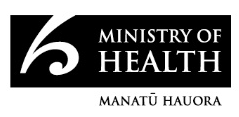
Document 1
positive or since the onset of
symptoms (whichever is later);
and have been symptom free
for 72 hours; and pass a health
check from a health
practitioner.
1982
Act
INFORMATION
OFFICIAL
THE
UNDER
RELEASED
10
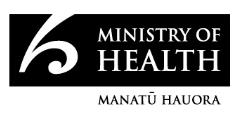





Document 2
Memo
Reconnecting New Zealand: Further advice on removing self-isolation
requirement for international arrivals and bringing forward Step 2
Date:
27 February 2022
To:
Dr Ashley Bloomfield, Te Tumu Whakarae mō te Hauora, Director-General of Health
1982
Copy to:
Bridget White, Deputy Chief Executive, COVID-19 Health System Response
Act
From:
Caroline Flora, Associate Deputy Director-General, System Strategy and Policy
For your:
Action
Purpose of report
1.
This memo provides you with further advice on removing the self-isolation requirement
INFORMATION
for people entering New Zealand and new advice on bringing forward Step 2 of
Reconnecting New Zealand. We understand that Ministers intend to make an in-principle
decision at Cabinet on Monday 28 February 2022 and an announcement the same day.
Implementation could be as early as Friday 4 March 2022.
2.
Associate Minister of Health, Hon Dr Ayesha Verrall, will present an oral item to Cabinet on
OFFICIAL
Monday 28 February 2022. DPMC is preparing a briefing today to support the Cabinet
discussion, and it will be informed by advice from the Skegg Group on removing MIQ and
THE
self-isolation. This memo provides a Ministry of Health view to support the DPMC briefing
to Hon. Verrall and covers:
Removing the self-isolation requirement for people coming into New Zealand under
the Reconnecting New Zealand programme
UNDER
Bringing forward Step 2 of Reconnecting New Zealand
Testing and vaccination requirements for people arriving in New Zealand
Operational and lead-in requirements
Future of MIQ.
RELEASED
Background and context
3.
On 1 February 2022, Cabinet agreed to key settings and the timing of a 5 Step programme
for Reconnecting New Zealanders with the world. The first step for New Zealanders and
other eligible travellers from Australia commences at 11.59pm Sunday 27 February. Step 2
captures New Zealanders and other eligible travellers from other countries and is set to
commence at 11.59pm Sunday 13 March.
4.
Returnees under the 5 Step programme will no longer be required to enter Managed
Isolation and Quarantine (MIQ) facilities but will be required to enter self-isolation.
Page 1 of 6
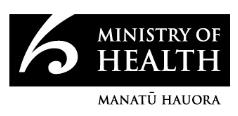
Document 2
Effect of future border cases on community outbreak
5.
Te Pūnaha Matatini have modelled the effect on the current outbreak of cases entering
across the air border. They assume that 25% of active cases can be detected by testing on
arrival. The other 75% of active cases would slip through the safe-guards of testing and
self-isolation into the community and seed new outbreaks.
6.
The model estimates that 90 active cases arriving each week under Step 1 would increase
community cases and hospitalisations by about 0.3% overall, compared to the current
expected trajectory of the outbreak.
7.
The worst scenario for Step 2 is another 600 active cases week entering the self-isolation
pathway each week. The Te Pūnaha Matatini model estimates that would increase
1982
community cases and hospitalisations by less than another 1% over the course of the
current outbreak – which is much less than the difference between the “high” and
Act
“medium” scenarios in the current Te Pūnaha Matatini model.
8.
This prediction may be optimistic, because international arrivals may go to any part of
New Zealand, and seed new outbreaks in areas that do not yet have significant numbers
of cases. The model also assumes that the variants of the imported cases present are
similar in transmissibility and health outcomes to the current Omicron variant.
Removing self-isolation requirements for arrivals into New Ze
INFORMATION aland
9.
On 21 February 2022 a Public Health Risk Assessment considered the proportionality of
the border settings alongside the settings for the domestic management of COVID-19.
With the shift to Phase Three measures of the Omicron response there are implications on
the legitimacy of our current border settings and self-isolation settings proposed under
OFFICIAL
Reconnecting New Zealand programme.
10.
The relative risk of becoming infected with COVID-19 in New Zealand now exceeds the risk
THE
at the border so it is unlikely that all MIQ or self-isolation settings will remain required
from a public health risk management perspective.
11.
The core policy objective of MIQ, self-isolation, and testing requirements for international
arrivals is to prevent and limit
UNDER risk of an outbreak or limit the spread of COVID-19 in the
New Zealand community.
12.
These measures were proportionate when we were pursuing an elimination strategy and
more recently preventing a widespread Delta outbreak, and the aim was to take all
reasonable steps to reduce the possibility of a case at the border seeding a community
outbreak.
RELEASED
13.
With the current situation of an escalating COVID-19 outbreak in New Zealand, there is
now a greater risk of being infected within the community compared to the risk of arrivals
importing COVID-19 from overseas. As such, it is harder to justify tighter restrictions on
international arrivals than those applied to those in the community from a public health
risk management perspective.
14.
Despite the assessment that international arrivals now present a relatively lower risk, we
are mindful that any transition would need to be managed carefully to reduce potential
negative impacts on communities and the health system. This would mean continuing to
Page 2 of 6
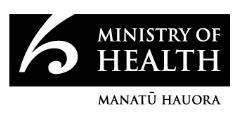



Document 2
manage the risk offshore in the short-term, i.e. requiring vaccination and pre-departure
testing.
Bringing forward Step 2 of Reconnecting New Zealand
15.
Step 2 of Reconnecting New Zealand is scheduled to commence at 11.59pm Sunday 13
March 2022 and will allow all New Zealanders and other eligible travellers from all
counties to enter New Zealand without the requirement for entering MIQ.
16.
The Ministry of Health’s view is that it will be difficult to reinstate settings once they are
removed. We recommend that this is clearly stated in the DPMC advice, as decisions taken
now may have impacts on our ability to respond to future variants, which may be more
1982
serious than Omicron.
Act
Treating border arrivals like close contacts
17.
We had recently advised that international arrivals present a similar (or lower) COVID-19
risk profile to close contacts in the community, and therefore, as a general principle,
arrivals should be required to meet broadly similar testing and isolation requirements as
close contacts of domestic cases. Based on this advice, Cabinet agreed that the self-
isolation pathway settings should broadly align with settings for managing close contacts
in the community [CAB—22-MIN-008 refers].
INFORMATION
18.
With the move to Phase Three of the Omicron response and wider spread of COVID-19 in
New Zealand, non-household close contacts are no longer required to undertake self-
isolation, irrespective of vaccination status. Our view is that the requirement for
international arrivals should be similar.
OFFICIAL
Testing requirements
19.
THE
The current testing requirements for arrivals under the self-isolation pathway are:
a negative pre-departure test
take a RAT on days 0/1 and 5/6
UNDER
report the results, and if tested positive get a PCR test from a community testing
centre.
20.
While these requirements are greater than those that are now required by non-household
close contacts in New Zealand, we propose that some testing requirement is justified.
There is a reasonable public health rationale to maintain a testing requirement for
international arrivals to assess whether people coming across the border are positive and
RELEASED
potentially looking for any new variants.
21.
The testing requirements we propose are a RAT on day 1/2 with a requirement to log a
positive result and isolate if positive, just like a community case.
22.
We propose a high trust model of monitoring and compliance, as it will not be possible to
take a more active enforcement role given the volume of people expected to enter New
Zealand.
23.
We do not recommend a follow up PCR test for positive RATs. The main reason that PCR
tests would be required would be to do whole genome sequencing as part of surveillance
of potential new variants. We expect that we will get warning of these from surveillance in
Page 3 of 6
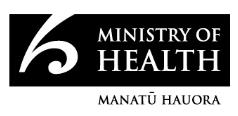


Document 2
other countries. On balance there is not a strong case for doing PCR and whole genome
sequencing (WGS) on all arrivals, but we recommend that we review PCR and WGS
priorities over the coming two weeks to see how they are best deployed as we move
through the Omicron outbreak.
Vaccination requirements
24.
Under the Reconnecting New Zealand programme only fully vaccinated arrivals can self-
isolate and avoid entering MIQ.
25.
If self-isolation requirements are removed and Step 2 is brought forward, decisions are
required about whether it is proportionate for unvaccinated arrivals or people with
1982
unapproved vaccines to still enter MIQ.
Act
26.
The Strategic COVID-19 Public Health Advisory Group, chaired by Prof Sir David Skegg,
provided advice to Hon Dr Ayesha Verrall on 27 February 2022 on the relaxation of border
restrictions (attached as Appendix 1). In that advice the Group recommended that it is
appropriate to remove the requirement for self-isolation of fully vaccinated travellers after
they arrive in New Zealand. The Group developed this advice on the assumption that
unvaccinated people would continue to enter the MIQ system.
27.
In the time available, it has not been possible to consider alternative MIQ configurations
that could result in MIQ or self-isolation being used in a proportionate and
INFORMATION justified way
for unvaccinated (or inadequately vaccinated) people.
28.
Therefore, options that are available are to either:
treat unvaccinated and vaccinated people the same, which would allow unvaccinated
people to avoid entering MIQ (similar rationale for treatment of close contacts in the
OFFICIAL
community at Phase 3); or
retain existing MIQ settings for unvaccinated people, which would require that
THE
unvaccinated people entering MIQ for seven days.
29.
Given the current situation, our advice is that MIQ will no longer be warranted for
unvaccinated (or inadequately vaccinated) people entering the country. Further, we
UNDER
understand that most airline policies preclude the carriage of unvaccinated travellers.
30.
As a result, our advice is that unvaccinated people should not be required to enter MIQ.
We recommend that advice to Ministers reflects that there are risks associated with this
approach and that more robust decisions could be made following more fulsome
consideration of alternative MIQ and self-isolation configurations, such as requiring
unvaccinated returnees to complete a period of self-isolation until a negative RAT test (or
RELEASED
series of tests) is returned.
Operational and lead-in requirements
Legislative
31.
Operational arrangements will not be able to be finalised until the appropriate legislation
is in place.
Page 4 of 6
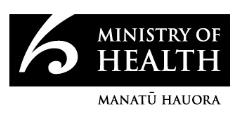
Document 2
32.
To give effect to the possible changes, amendments to several Orders made under the
COVID-19 Public Health Response Act 2020 would be required. We expect that these
amendments will take around a week to draft.
33.
We understand that Ministers may wish to make rapid changes to MIQ requirements for
people who have arrived from Australia and are currently in MIQ. Legal teams are meeting
to discuss this more fully this evening. One option could be for an exemption power to be
used, either by you or by the Medical Officers of Health assigned to MIQ (who currently
make individual decisions about early release). We will provide you with further advice on
this on 28 February 2022.
Health border teams
1982
34.
The proposed shifts would create an opportunity for the role of border health teams at the
airport to be reconsidered. This workforce is currently available for self-declared
Act
symptomatic arrivals only and for those arriving to MIQ (as part of the staffing of MIQ
facilities). With the increasing shift of risk away from the border to community
transmission this workforce would be better utilised across the wider Omicron response.
Communications and logistics 35.
While self-isolation guidance can easily be removed from the website, there is
considerable collateral and communications exercises that would need to be undertaken.
Until such time that settings, testing requirements and timings are confirme
INFORMATION d, this work
cannot commence.
Digital enablers
36.
Ensuring the digital tools are ready to move to Step 2 will take approximately 48 hours.
OFFICIAL
37.
The current Traveller declaration, Nau Mai Rā, will need to be updated. There will be
increased demand on our data and digital team for all the affected systems, and this may
be difficult to implement in this short
THE timeframe. There are also on-the-ground difficulties
for those arrivals that have already submitted their declaration for travel after any changes
come into effect.
Recommendations UNDER
It is recommended that you:
1.
Note
that the relative COVID-19 transmission risk posed by
Noted
international arrivals is no longer higher than the domestic risk of
COVID-19
RELEASED
2.
Note
that care needs to be taken removing current settings as this
Noted
could reduce our ability to manage future outbreaks
3.
Agree
that, from a public health perspective, the requirement for people
Yes/No
entering New Zealand to self-isolation should be removed to
bring it in line with the requirements on non-household close
contacts in the community
Page 5 of 6
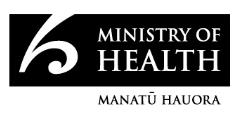


Document 2
4.
Agree
that this should also mean there would be no MIQ requirement
Yes/No
for unvaccinated people entering the country, which would also
be consistent with broader settings across the community
5.
Note
that the number of people choosing to cross the border if the
Yes/No
self-isolation requirement is removed will increase although this
will be limited by flight capacity.
6.
Agree
to keep the requirement for a negative pre-departure test, for
Noted
now, to mitigate in part the risk of active cases arriving into the
country.
1982
7.
Agree
that arrivals must still undertake a RAT on days 0/1 until further
Yes/No
Act
notice.
8.
Agree
that under the proposed changes a high trust model without
Yes/No
active follow-up or enforcement of testing requirements for
international arrivals is required.
9.
Note
that the Government may need to consider bringing forward Step
Noted
2 of Reconnecting New Zealand from 13 March 2022 if self-
INFORMATION
isolation requirements are removed for international arrivals.
10.
Note
the operational challenges of bringing forward this date.
Noted
11.
Agree
to share this advice with the Department of Prime Minister and
Noted
OFFICIAL
Cabinet for advice to Associate Minister for Health, Hon Dr Ayesha
Verrall to present on these issues at Cabinet on Monday 28
February 2022.
THE
UNDER
Signature
__________________________________
Date: 27 February 2022
Caroline Flora
Associate Deputy Director-General, System Strategy and Policy
RELEASED
Signature
_________________________
Date: 27 February 2022
Dr Ashley Bloomfield
Te Tumu Whakarae mō te Hauora, Director-General of Health
Appendix One: Advice from the Strategic COVID-19 Public Health Advisory Group
Page 6 of 6
Document Outline
- H202203663 Maxwell documents.pdf




































